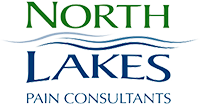Beyond “RICE” – 5 tools to Limit Your Pain at Home
Beyond “RICE” – 5 tools to Limit Your Pain at Home
Beyond “RICE” – 5 tools to Limit Your Pain at Home
The acronym R.I.C.E. (rest, ice, compression, elevation) has been a staple in injury care for decades. Its easy-to-remember process has meant that homes everywhere have flexible ice packs and compression materials at the ready in case someone gets hurt. However, recent studies have found that the traditional R.I.C.E. method, particularly the act of icing an injury, can actually slow down the healing process. So, how do you limit your pain at home if R.I.C.E. is off the table?
5 Ways to Limit Your Pain at Home
1. Reduce the amount of stress in your life.
As strange as it sounds, stress can exacerbate pain. The purpose of your body’s natural fight or flight response is to prepare for battle or prepare to run away from danger. Since your body cannot differentiate between a looming deadline and a predator, your muscles respond the same way. Muscle tightness and tension that lead to pain often subside when you learn to better manage the stress you experience on a daily basis.
2. Get moving.
Our natural tendency to “rest” when we are in pain is often counterproductive to long-term healing. Gentle stretching and movement increase blood flow to the painful area to aid the healing process. Exercise also signals your brain to release feel-good hormones that act as a natural pain reliever. Even a brief walk outside, yoga, swimming, or tai chi can improve blood flow with minimal risk of further injury. If you are unsure which exercises are safe to do while you are recovering, call North Lakes Pain Consultants for a list of approved exercises for your particular condition.
3. Soak away the pain.
Warm water is one of the least expensive and most effective ways to relieve pain, relax muscles and loosen joints. Adding Epsom salts can also increase your body’s absorption of magnesium, a nutrient that is vital to sleep and healing. The water should be warm, but not hot. Sweating while you are in the bath can lead to dehydration and higher pain levels.
4. Skip the alcohol.
Alcohol is toxic to nerves if consumed in large amounts. Essential vitamins such as thiamine, folate, and vitamin E are all needed for proper nerve conduction. When you consume too much alcohol, your nutrient levels are affected, and increased pain levels can result. This begs the question, “What is considered a safe amount?” There is no magic number of drinks you can have in a week and avoid nerve pain. Abstaining from alcohol entirely means you never run the risk of higher pain levels.
5. Dial in your nutrition.
When you are in pain, the last thing you want to think about is your diet. Yet the food you eat can have a direct impact on the level of painful inflammation you experience in your muscles and joints. Load up on vegetables, fruit, lean protein, and whole grains and skip the sugar, soda, red meat, and margarine.
Even if you are doing everything right, you may still experience pain. If your pain is severe or lasts longer than two weeks, let the experts at North Lakes Pain Consultants help you on the road to recovery. Call today to schedule your appointment.
[/et_pb_text][et_pb_button url_new_window=”on” custom_button=”on” button_text_size=”28px” button_text_color=”#ffffff” button_bg_color=”#0f5e15″ button_use_icon=”off” button_text_shadow_style=”preset2″ box_shadow_style=”preset2″ button_text=”Request an Appointment” _builder_version=”3.19.5″ button_url=”https://northlakespain.com/request-an-appointment/” button_alignment=”center” button_font=”||||||||”][/et_pb_button][/et_pb_column][/et_pb_row][/et_pb_section]
